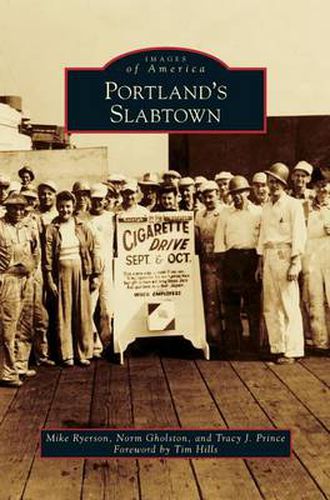Readings Newsletter
Become a Readings Member to make your shopping experience even easier.
Sign in or sign up for free!
You’re not far away from qualifying for FREE standard shipping within Australia
You’ve qualified for FREE standard shipping within Australia
The cart is loading…






This title is printed to order. This book may have been self-published. If so, we cannot guarantee the quality of the content. In the main most books will have gone through the editing process however some may not. We therefore suggest that you be aware of this before ordering this book. If in doubt check either the author or publisher’s details as we are unable to accept any returns unless they are faulty. Please contact us if you have any questions.
In Portland’s first decades, the northwest side remained dense forests. Native Americans camped and Chinese immigrants farmed around Guild’s Lake. In the 1870s, Slabtown acquired its unusual name when a lumber mill opened on Northrup Street. The mill’s discarded log edges were a cheap source of heating and cooking fuel. This slabwood was stacked in front of working-class homes of employees of a pottery, the docks, icehouses, slaughterhouses, and lumber mills. Development concentrated along streetcar lines. The early 20th century brought the 1905 Lewis and Clark Centennial Exposition, manufacturing, shipbuilding, Montgomery Ward, and the Vaughn Street Ballpark. Today, Slabtown is a densely populated residential neighborhood, with many small shops and restaurants and an industrial area on its northern border. Tourists still arrive by streetcar to the charming Thurman, NW Twenty-first, and Twenty-third Avenues. Famous residents include author Ursula Le Guin, baseball greats Johnny Pesky and Mickey Lolich, NBA player Swede Halbrook, and Portland mayors Bud Clark and Vera Katz.
$9.00 standard shipping within Australia
FREE standard shipping within Australia for orders over $100.00
Express & International shipping calculated at checkout
This title is printed to order. This book may have been self-published. If so, we cannot guarantee the quality of the content. In the main most books will have gone through the editing process however some may not. We therefore suggest that you be aware of this before ordering this book. If in doubt check either the author or publisher’s details as we are unable to accept any returns unless they are faulty. Please contact us if you have any questions.
In Portland’s first decades, the northwest side remained dense forests. Native Americans camped and Chinese immigrants farmed around Guild’s Lake. In the 1870s, Slabtown acquired its unusual name when a lumber mill opened on Northrup Street. The mill’s discarded log edges were a cheap source of heating and cooking fuel. This slabwood was stacked in front of working-class homes of employees of a pottery, the docks, icehouses, slaughterhouses, and lumber mills. Development concentrated along streetcar lines. The early 20th century brought the 1905 Lewis and Clark Centennial Exposition, manufacturing, shipbuilding, Montgomery Ward, and the Vaughn Street Ballpark. Today, Slabtown is a densely populated residential neighborhood, with many small shops and restaurants and an industrial area on its northern border. Tourists still arrive by streetcar to the charming Thurman, NW Twenty-first, and Twenty-third Avenues. Famous residents include author Ursula Le Guin, baseball greats Johnny Pesky and Mickey Lolich, NBA player Swede Halbrook, and Portland mayors Bud Clark and Vera Katz.